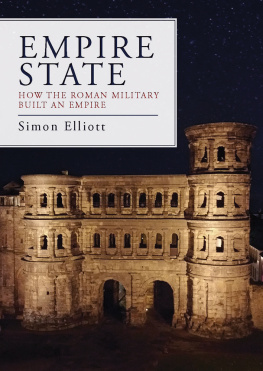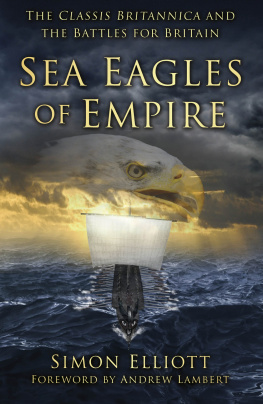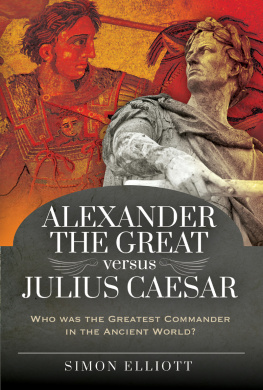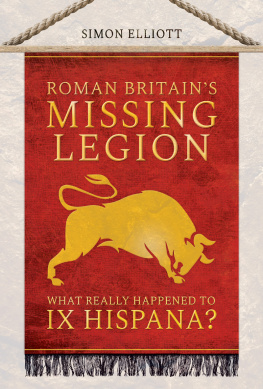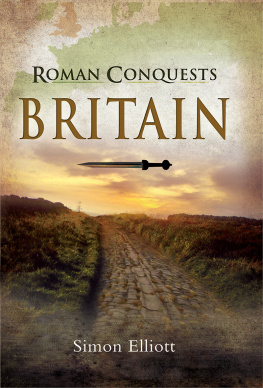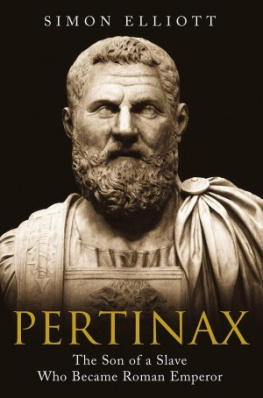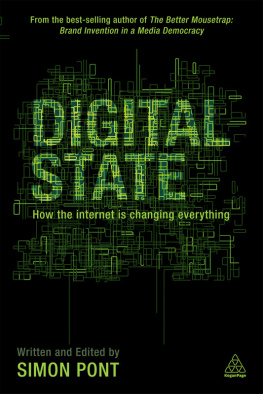Elliott Simon - Empire State
Here you can read online Elliott Simon - Empire State full text of the book (entire story) in english for free. Download pdf and epub, get meaning, cover and reviews about this ebook. year: 2017, publisher: Oxbow Books, Limited, genre: Romance novel. Description of the work, (preface) as well as reviews are available. Best literature library LitArk.com created for fans of good reading and offers a wide selection of genres:
Romance novel
Science fiction
Adventure
Detective
Science
History
Home and family
Prose
Art
Politics
Computer
Non-fiction
Religion
Business
Children
Humor
Choose a favorite category and find really read worthwhile books. Enjoy immersion in the world of imagination, feel the emotions of the characters or learn something new for yourself, make an fascinating discovery.
- Book:Empire State
- Author:
- Publisher:Oxbow Books, Limited
- Genre:
- Year:2017
- Rating:4 / 5
- Favourites:Add to favourites
- Your mark:
- 80
- 1
- 2
- 3
- 4
- 5
Empire State: summary, description and annotation
We offer to read an annotation, description, summary or preface (depends on what the author of the book "Empire State" wrote himself). If you haven't found the necessary information about the book — write in the comments, we will try to find it.
Empire State — read online for free the complete book (whole text) full work
Below is the text of the book, divided by pages. System saving the place of the last page read, allows you to conveniently read the book "Empire State" online for free, without having to search again every time where you left off. Put a bookmark, and you can go to the page where you finished reading at any time.
Font size:
Interval:
Bookmark:

To my loving wife Sara for your endless patience and support.
The Roman state was the principal political force within the empire, intricately involved in all economic activities geared to supporting its infrastructure and own continuance. Yet, as a patrician institution, it also had other responsibilities, with political, economic and social roles which were often related. In an age before the advent of a civil service, nationalised industries and a free market able to fund major capital expenditure projects, to fulfil these responsibilities it turned to the only tool at its disposal, namely the military, the largest institution within the empire.
These armed forces of Rome, particularly those of the later Republic and Principate, are rightly regarded as some of the finest military formations ever to engage in warfare. In their time, the legions, auxilia and regional navies of Rome were pre-eminent, masters of most fields and seas of battle in which they engaged. Less well known however is their use by the State as tools for such non-military activities in political, economic and social contexts. In this capacity, they were central instruments for the emperor and his provincial governors and procurators to ensure the smooth running of the Empire, making sure each province paid its keep into the imperial fiscus (treasury). As Goldsworthy (2003, 145) says:
Roman Emperors governed with the aid of only a very small civilian bureaucracy, and frequently called upon the army to perform many non-military tasks, simply because there was no one else available.
The use of the military in this regard also served another function, namely to keep the various components of the armed forces of Rome busy when not engaged in military activity. Simply put, it was not wise to allow such elite troops to lie idle for too long lest they begin to agitate.
In this book, the use of the military for such non-conflict related duties is considered in detail for the first time. To enable the narrative to run freely, the book is specifically broken down into a number of chapters each telling a key part of this story. In the first instance in then examining the command and control of the empire from the emperor downwards to explore the means by which the military would have been employed by the state for non-military tasks. Here, the first detailed scrutiny of the military in such major roles is examined, namely administering and policing the empire, providing a firefighting resource and facilitating the games in the arena.
Sequential chapters will then review in detail the use of the military in very specific non-conflict roles. The first, and best known, is in their capacity as engineers. Today there is a very clear distinction between the activities of military and civil engineers, this in a British context dating back to at least 1760 when John Smeaton advertised himself as an engineer for hire. In the Roman world, however, there was no such clear distinction, and so if the state required a great engineering task to be undertaken then it was the military who were deployed in this capacity. The military was a resource well capable of such tasks, with even the lowliest legionary, auxilia or naval milites (a catch-all term for soldier) being a trained engineer, and with the major military formations featuring specialist engineers of all kinds (note that this work specifically doesnt cover siege engineering in the field). A separate chapter will then look at the role of these military engineers of all levels and kinds in some of the great construction projects of the empire.
Next, the role of the Roman military in the running of industry across the Roman Empire is examined, particularly the metalla mining and quarrying industries. The subject of my own MA research at the Institute of Archaeology, UCL, and more recently my PhD research at the University of Kent, this is an area of particular importance to this work given the new findings and interpretations I will present.
A final specific focus of this work will be an examination of the role played by the military in agriculture throughout the empire. Despite the headline-grabbing nature of the militarys role facilitating industry, it was agriculture that was by far the most important component of the Roman economy, and therefore the militarys role in this regard is particularly important. This chapter will be followed by a conclusion which includes a review of the preceding chapters to present a holistic appraisal of the use of the Roman military in a non-fighting capacity as a key tool of the state, an analysis of how this role changed as the empire progressed from its Principate to Dominate phase (with a particular focus on the reform of the imperial administration by Diocletian in his reformation), and finally a reflection on how this research has enabled us to see the Roman military in a way distinct from the view that they were other when compared to the rest of the society they served. The book also has four appendices to act as guides for the relevant chapters in the book, beginning with a review of the geology of the south-east of Britain which is very pertinent to . Finally, given the importance in the book of examples from Britain, I include a timeline of the key developments in the province throughout its occupation by Rome. The book ends with a list of references and bibliography to allow the reader to pursue their own research on the subjects covered here.
Note that this work features both a re-examination of existing appreciations of the Roman military carrying out various civilian activities, though uniquely bringing together the various strands and themes in this regard into a single volume for the first time, together with some new cutting edge research found here in print, also for the first time. This latter is specifically with regard to my PhD research into the Roman military running state industries in the province of Britain, and particularly the industrial scale iron manufacturing industry in the Weald and ragstone quarrying industry of the Upper Medway Valley (which built a large amount of Roman London). Until their demise in the mid-3rd century these industries, and their supporting industrial and transport infrastructure, effectively represented the industrial heartland of Roman Britain (on a scale never to be replicated through the rest of the occupation). They are specifically addressed as two case studies in .
In terms of chronology, given the vast breadth of the subject matter, the focus of this book is mainly on the military forces of the Principate (namely from the coming to power of Augustus in 27 BC to the end of the Crisis of the 3rd Century with the accession of Diocletian in AD 284). That is not to say that the Roman military were not similarly employed in non-conflict tasks in the Republic or later during the Dominate phase, but focusing on the empire at its Principate height allows a tighter focus on specific examples. It was during the Principate that the empire expanded to its greatest extent, under the great soldier Emperor Trajan, with his conquests in Dacia north of the Balkans and along the eastern frontier. After his reign, however, the continuous outward expansion experienced by the empire ceased, to be replaced from Hadrian onwards with a policy of consolidation (DAmato, 2016, 6). It is from this time we begin to see the formalisation of the borders of the empire, with for example the construction of Hadrians Wall (dubbed limes Britannicus ) in Britain and the limes Germanicus along the Rivers Rhine and (partially) Danube. This transition, broadly, from offence to defence is reflected in the use of the military for non-conflict purposes and is a journey evident in the chapters that follow. Also of note, given the focus of the research presented here on the Principate, while the book does consider in detail the early military reforms of Septimius Severus in the late 2nd and early 3rd centuries AD, it doesnt those of Diocletian or Constantine from the late 3rd into the 4th centuries AD (excepting referencing them in the conclusion in ).
Next pageFont size:
Interval:
Bookmark:
Similar books «Empire State»
Look at similar books to Empire State. We have selected literature similar in name and meaning in the hope of providing readers with more options to find new, interesting, not yet read works.
Discussion, reviews of the book Empire State and just readers' own opinions. Leave your comments, write what you think about the work, its meaning or the main characters. Specify what exactly you liked and what you didn't like, and why you think so.

